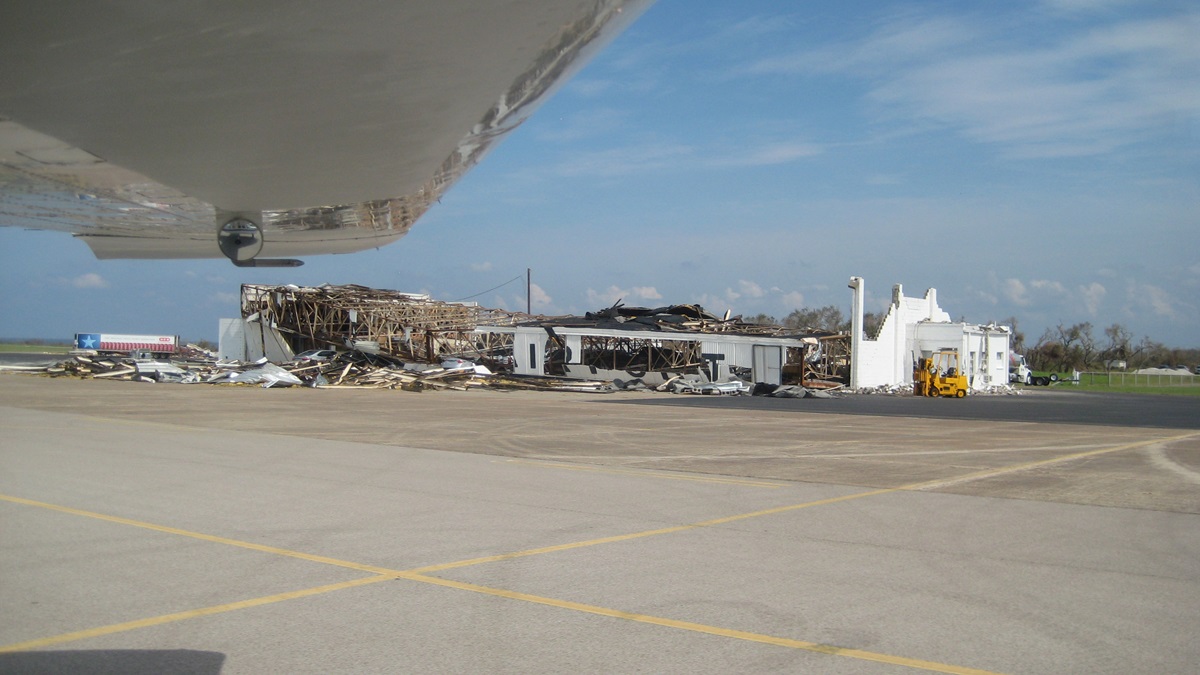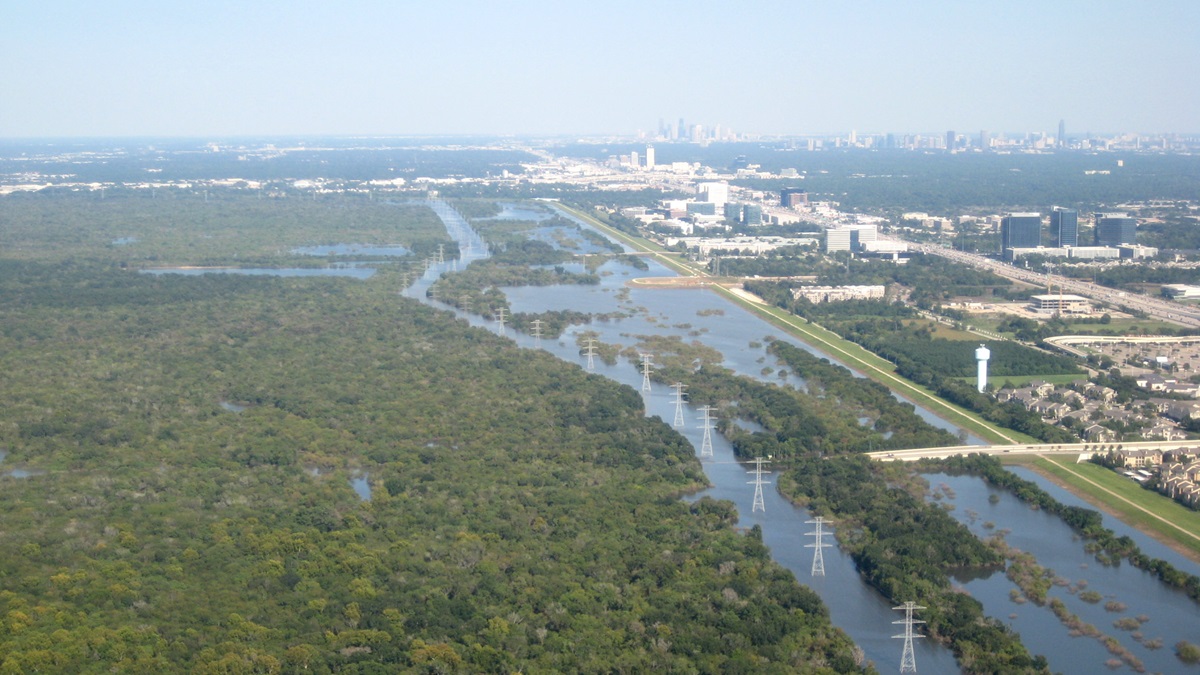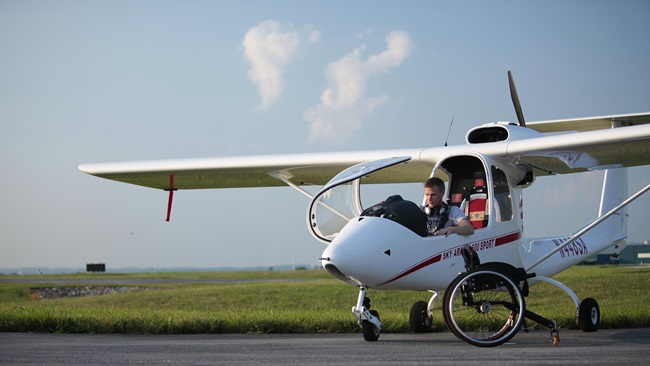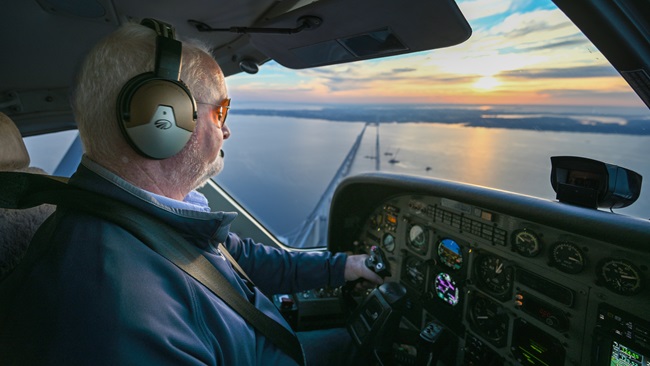Small efforts add up to help Texans clean up, rebuild
Flying with Operation Airdrop
After Hurricane Harvey battered much of Texas, my wife, Ann, and I knew that we wanted to help with the relief efforts in hard-hit South Texas. We were left untouched at our home in Denton just north of the Dallas-Fort Worth area.
The initial plan was to make a group delivery to Conroe, Texas, on Friday, Sept. 1, and then deliveries to Rockport on Saturday and Sunday, Sept. 2 and 3.
Outpouring of generosity
Supply drop locations had not been set up yet, so pilots who wanted to participate needed to fill their own airplanes with supplies. Late Thursday, Aug. 31, I sent an email to my neighbors with a specific supply list: diapers and wipes, paper products, toilet paper, feminine products, trash bags, and Clorox wipes. I planned to fly to Rockport on Sunday, but I wasn’t sure if I would fill my Cessna P210 in two short days. By mid-morning Friday, my front porch already had about five cubic feet of supplies. By noon Saturday, we needed a neighbor’s vehicle along with ours to help drive the supplies to the airport, and we had to make another run that evening.
We weighed and marked the items before we left the house and then loaded the Cessna P210, which had the middle seats already removed. Ann logged the weight and location of each item we loaded so that I could get an accurate weight-and-balance calculation before I added fuel. We took the supplies that wouldn’t fit in the airplane to the newly established supply drop at Denton Enterprise Airport’s US Aviation Academy. Just from some of my neighbors, the Cessna P210 and two Bonanzas were filled with relief supplies.
Rockport mission
Temporary flight restrictions had been changing daily, but the good news was that outside of the central presidential TFR areas, emergency relief flights from general aviation pilots were generally authorized with prior coordination through the Texas Air Operations Center. Pilots were assigned a squawk code and had to be on an IFR flight plan or receiving VFR flight following services to enter the TFR. Not too difficult.
Pile after pile of twisted metal—the remains of hangars that had been blown to pieces—dotted the airfield, raked into piles like you would rake the leaves in your yard.The TFRs were gone by launch day, and the weather was mostly clear VMC with generally light winds in South Texas. Once I exited the Dallas-Fort Worth Class B airspace, the radios were generally quiet except for the occasional Angel Flight and Compassion call signs that checked in on the frequency. When I checked in with Corpus Approach Control near Rockport, the controller asked me an interesting question: “Have you confirmed the notams and status of the airfield?” A sobering question, but I had confirmed that morning with Wes Williams, our connection in Rockport, that the airport was open, but without fuel.
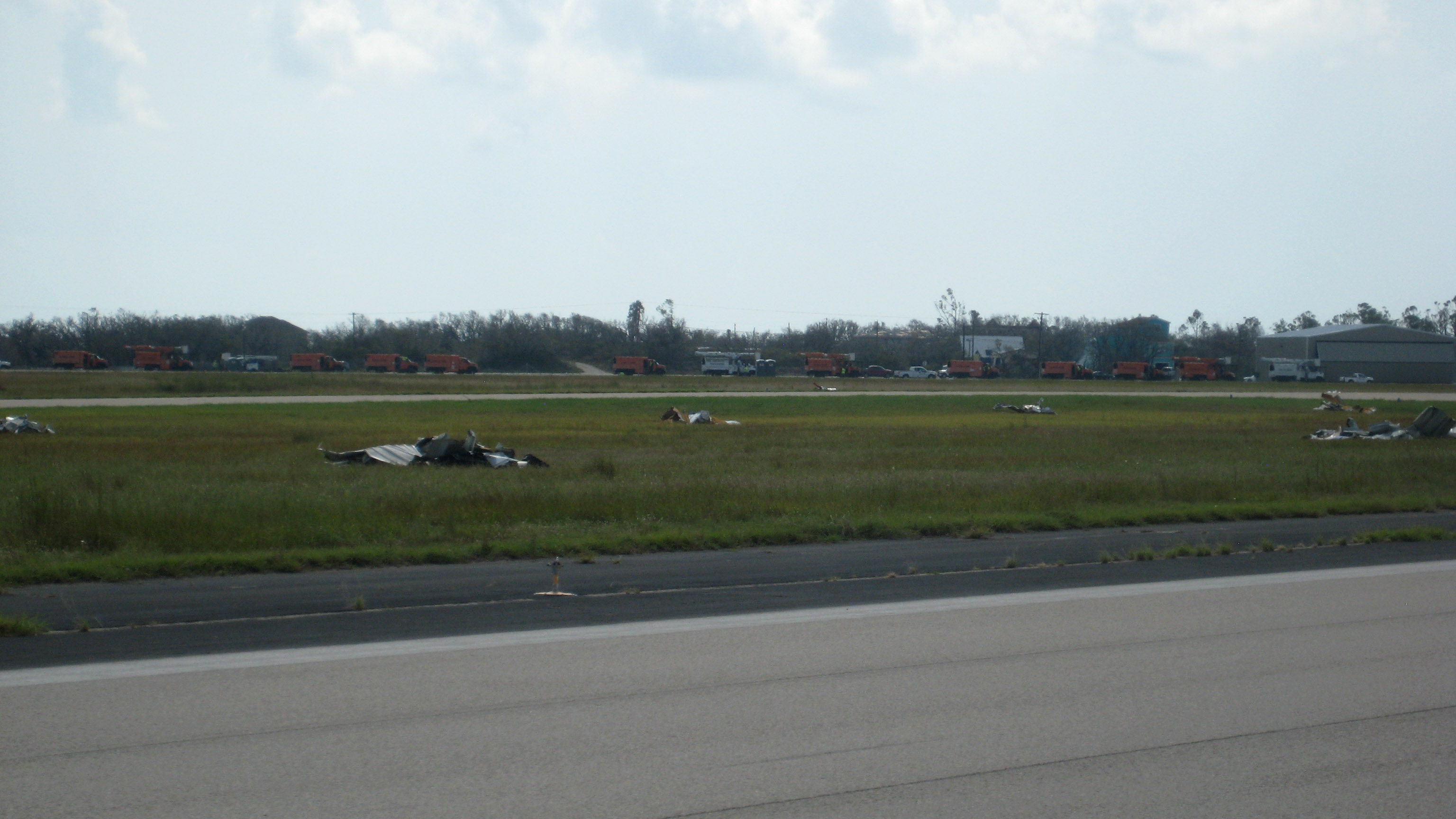
While on final approach to Runway 14 at Rockport, I expected to see areas under water, but there weren’t any. Aimpoint-airspeed focused my attention on the runway for a normal landing, but once I slowed down and started looking for my turnoff, I was caught off guard by a pile of twisted metal in the infield next to the runway. Pile after pile of twisted metal—the remains of hangars that had been blown to pieces—dotted the airfield, raked into piles like you would rake the leaves in your yard.
The airport manager greeted me on the radio and assured me that that runway, taxiway, and ramp area had been swept. (I wondered how many sheet metal screws had been sprayed around, and beyond, the airport.) A “Follow Me” pickup truck led me to the ramp. Williams met me at the airplane, and I made a quick run with him into town, where the supplies were dropped off. He and his wife, Sarah, had done a remarkable job of setting up a relief supply center in an open parking lot. As real as the surroundings already were with mangled buildings and upside-down boats, when I heard Williams remind his volunteers to “make sure to split up the toilet paper into smaller bundles before you give them out,” the extent of the devastation hit home even more. Without power or running water, and with destruction all around them, these people were really roughing it.
Without power or running water, and with destruction all around them, these people were really roughing it.Houston-area relief missions
A few more donations showed up at the house during the following week, and Ann’s phone calls to family and friends garnered checks to purchase additional supplies. Between that and the supplies at the US Aviation drop off point, I filled the Cessna P210 for another delivery on Saturday, Sept. 9. Amazingly, the weather was still very nice throughout South Texas. This time, I flew to Beaumont. The damage in that area was primarily due to flooding as opposed to high winds. Two volunteers from outside the area, one U.S. Marine from New Orleans, and two locals who were displaced and just trying to get started cleaning up their own houses helped unload the airplane.
I then flew an empty leg to Killeen, where another extremely organized group of volunteers named the Educated Angels helped load supplies that had been sorted into boxes or bags, each with a weight tag on it. While two helped load, one kept track of the total weight. They loaded a Cessna 414 in front of me, with the last two items put on board being a stack of pizzas and a bag of insect repellent that literally had just been dropped off by a donor. Once my airplane was loaded, I calculated the interim weight and balance, and added some fuel for my next leg to West Houston Airport.
After landing at West Houston, one of the linemen pulled a van up and we started unloading. About the same time, Shelly DeZevallos, one of the airport owners, drove up and said she felt horrible because the shelter the supplies were going to couldn’t take any more items. They were full! Between DeZevallos, and Brian Kelly and Allie Hoyt back in the Operation Airdrop Air Operations Center, they arranged for me to fly another 45 nautical miles south to Texas Gulf Coast Regional Airport to make my delivery.
I worked with Houston Approach Control to not activate my IFR flight plan back to Denton but instead get VFR flight following to Gulf Coast Regional Airport. I kept the “Compassion” call sign for another leg because I was still loaded with supplies. When I dialed in the ASOS at the airport, I heard a very interesting report:
“Texas Gulf Coast Regional Airport, automated weather observation, Two-Three-Zero-Three Zulu. Wind Missing. Visibility Missing. Sky Condition Missing,” and on and on. Houston Approach gave me the Sugarland weather, which was pretty much the same as the West Houston weather.
It was a very surreal feeling to land on this island of concrete elevated above the water.
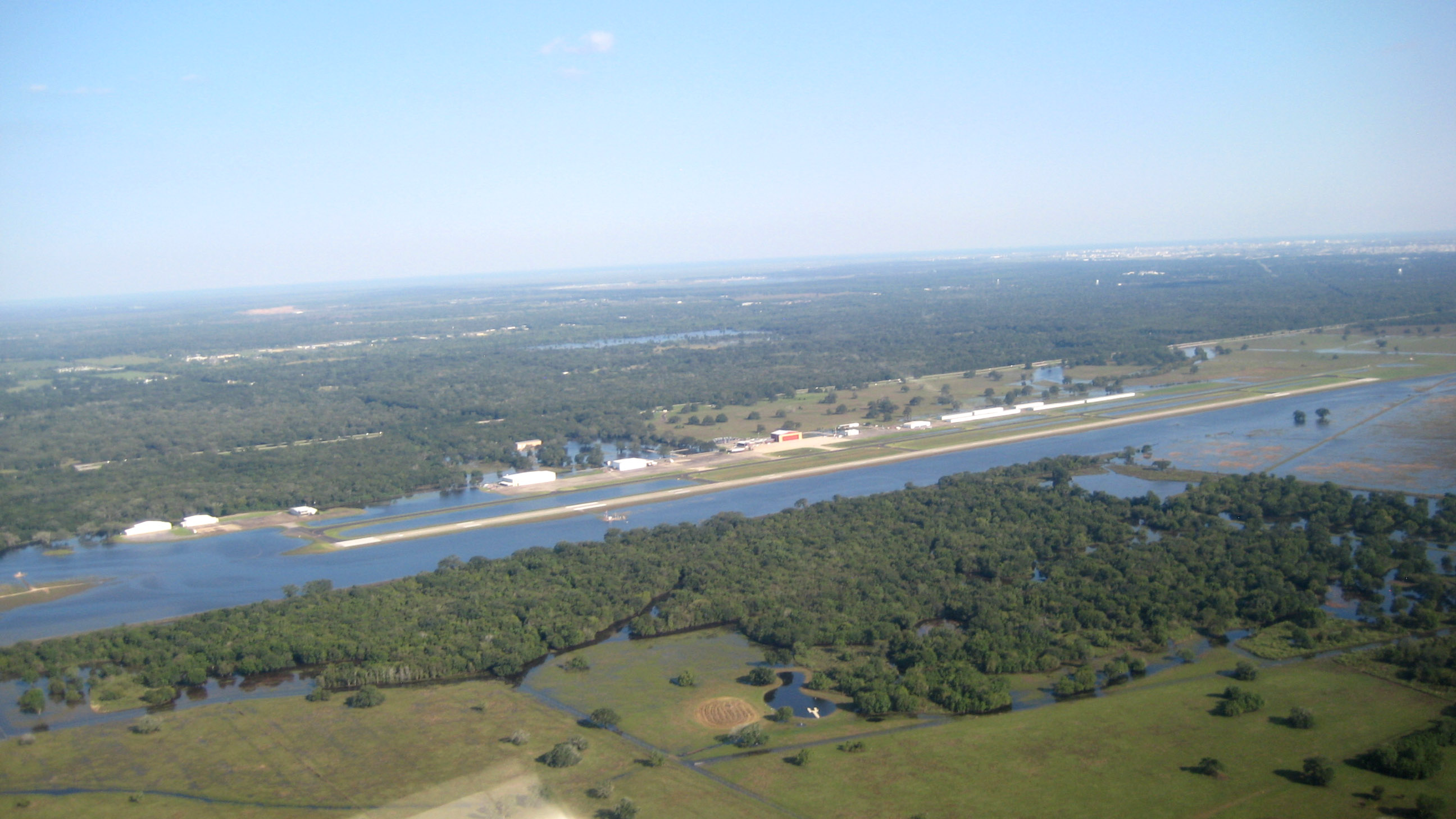
With the field in sight, I switched to the CTAF about 10 miles out. By 5 miles out I got a little nervous because I could see the runway was entirely surrounded by water; I couldn’t quite make out the status of the taxiways. The winds favored Runway 35, so if I couldn’t reach anyone on the radio I would do a low approach from north to south to survey the field before landing. The airport was attended, and they confirmed that all taxiways and ramps were open. It was a very surreal feeling to land on this island of concrete elevated above the water. I later found out that the only road leading to the airport was still under 16 inches of water, so only larger vehicles were even able to drive there.
Once I shut down, the first thing I noticed was the bugs. My unloader had not arrived yet, so I went into the terminal building to call flight service and re-file my last leg home. Unloading the airplane proved interesting as we tried to get things out as quickly as possible without letting any unwanted critters in for the flight home. This also made my Before Starting Engine checks a bit warm because I sat in the airplane with all the windows shut.
After another successful mission, I had smooth ride home and watched a beautiful sunset as I neared the Dallas-Fort Worth Class B airspace. In the big scheme of things, my part as a volunteer pilot was small. Many others flew more miles, and more cargo, and put in more time than I did, but I was privileged to help in the recovery efforts.
From the air traffic controllers and the ground volunteers to our neighbors and donors and the other pilots—all these smaller efforts have added up to keep our Texas neighbors down south on their feet and ready to clean up and rebuild.
Pilots who are considering participating in disaster relief flights are encouraged to take the AOPA Air Safety Institute's Public Benefit Flying: Balancing Safety and Compassion online course.


